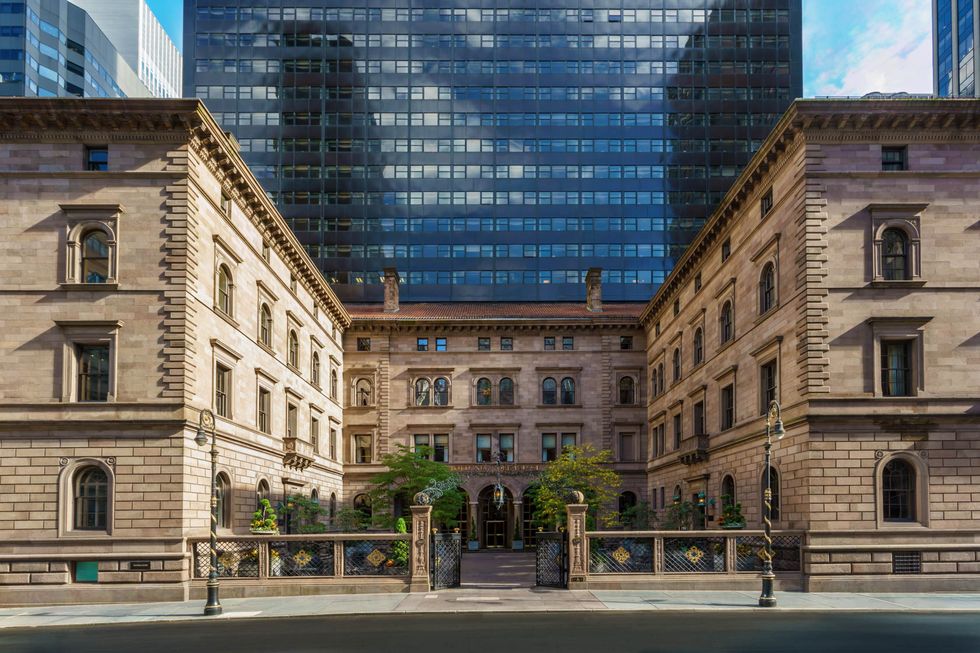In case HBO’s The Gilded Age hasn’t made clear enough already, there was once upon a time, circa 1880s, when the avenues and boulevards of New York City glittered with rows upon rows of palatial mansions built for robber barons named Vanderbilt, Astor, and Carnegie. In the century and a half since, the city’s landscape may have changed—and titans of industry today may prefer gleaming pied-à-terre castles in the sky—but a number sumptuous relics of the Gilded Age still stand. [Source: Town and Country]
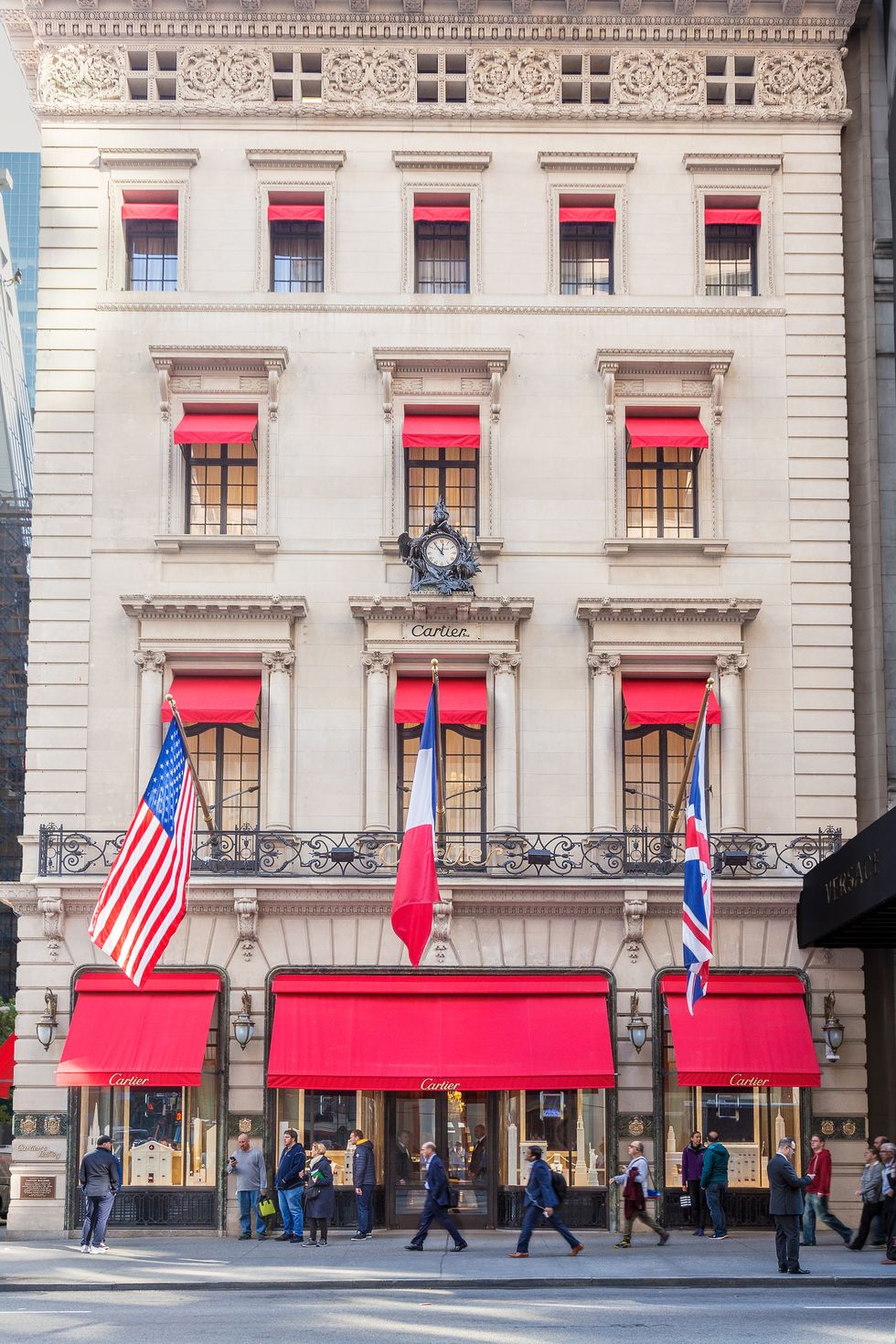 OlegAlbinsky//Getty Images
OlegAlbinsky//Getty Images
The Plant House
By the turn of the 20th century, the nouveau riche Vanderbilts had taken over the stretch of Fifth Avenue between 51st and 57th streets by building colossal palaces. There was the French Renaissance and Gothic style castle that Alva and William K. Vanderbilt (who inspired the Russells of The Gilded Age) commissioned in 1882 on the corner of 52nd Street. Next door that same year, William H. Vanderbilt (William K.’s father) built his Doric and Corinthian style Triple Palace. And also in 1882, Cornelius II built what would become the city’s largest single family house on the block that is now Bergdorf’s. In the early 1900s, the family sold one of their plots to Morgan Plant, son of railroad tycoon Henry Plant, who, by 1905, officially became a neighbor on Vanderbilt Row with a mansion that is now the iconic Cartier maison—in 1917, Louis and Pierre Cartier bought the Plant residence for $100 in cash and a double-stranded pearl necklace valued at the time at $1 million.
The Carnegie Mansion
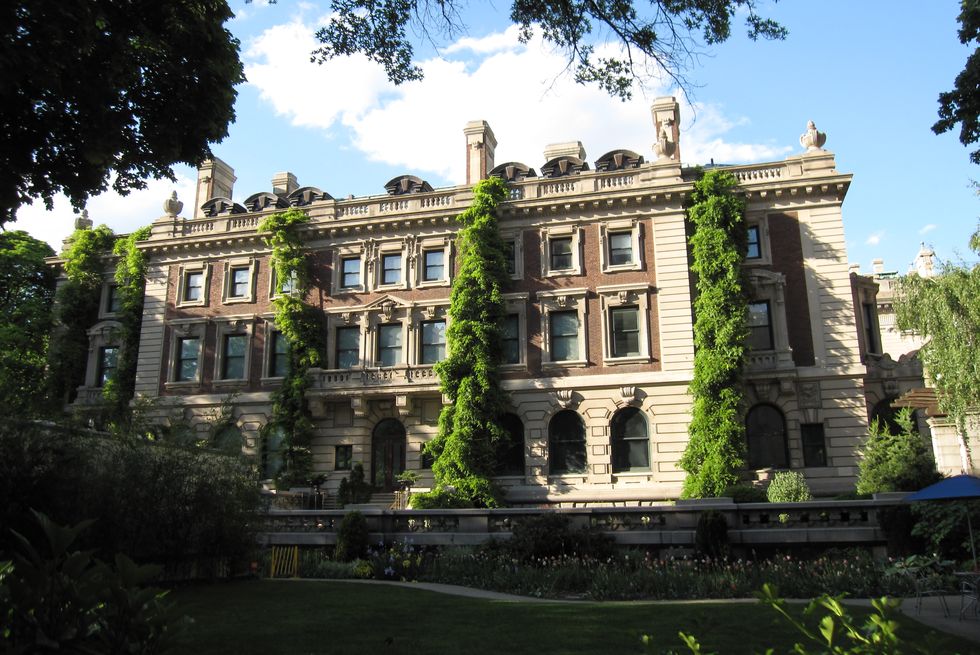 Gryffindor/Wikimedia Commons
Gryffindor/Wikimedia Commons
Rather than join his peers who were clustered farther south along Fifth Avenue, Andrew Carnegie ventured north in search of land large enough to accommodate a garden. He found it, on 91st and Fifth, and oversaw the construction of a 64-room English Georgian country home in the middle of Manhattan. But for all its bucolic charms, the mansion was far ahead of its time: it was the first American residence to have a steel frame and among the first to have a private Otis Elevator and central heating. Carnegie moved in in 1902 and lived there until his death in 1919. In the 1970s, his eponymous philanthropic corporation gave the estate to the Smithsonian and it became the home of the Cooper-Hewitt in 1976.
The Henry Clay Frick House
 Gryffindor/Wikimedia Commons
Gryffindor/Wikimedia Commons
By Gilded Age standards steel and railroad magnate Henry Clay Frick arrived later to the NYC real estate scene, around 1912—prior to that he was renting out William H. Vanderbilt’s mansion at 640 Fifth. Still, the estate he commissioned from notable Beaux-Arts architecture firm Carrère and Hasting (designers of the New York Public Library) would go on to have an outsize impact on the city, not only for the neoclassical structure itself but also for the immense collection of Old Master paintings, French porcelain, and 18th-century decorative arts he left behind (which now makes up the Frick Collection).
The Morgan House
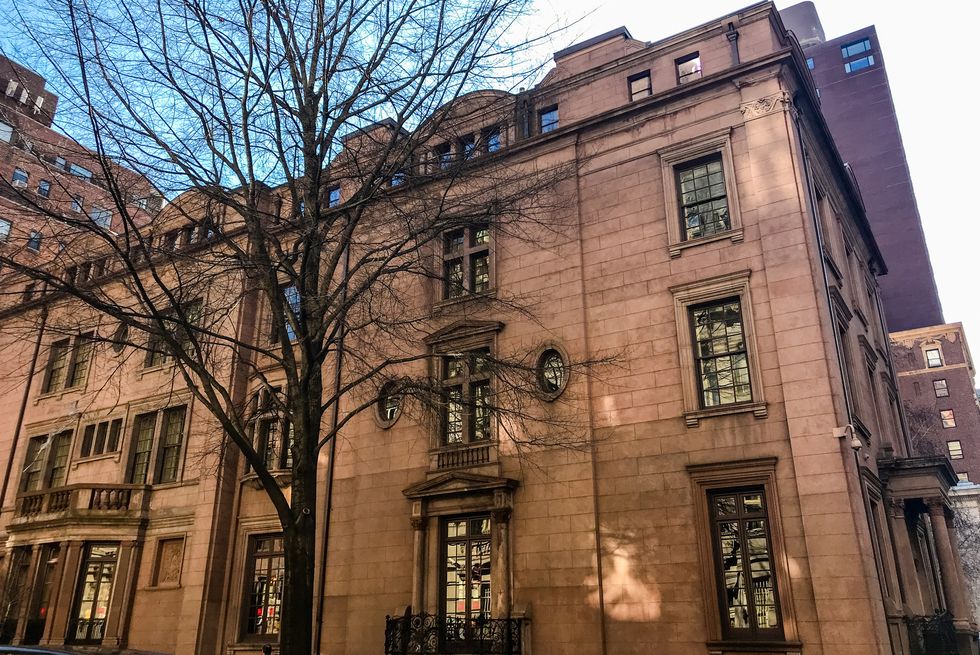 todamo//Getty Images
todamo//Getty Images
Before New York’s richest migrated farther uptown and took claim of the Upper East Side, their preferred playground was Murray Hill—after all it was where Caroline Astor, the Mrs. Astor, lived. Among the important homes in the neighborhood were a trio of brownstones built in the 1850s for the Phelps, Stokes, and Dodge families. Between 1881 and 1904, banker John Pierpont Morgan purchased the properties, using one as his residence (which was demolished in 1928), razing another for a garden, and gifting the last, a 45-room brownstone, to his son Jack. Today, it’s part of the Morgan Library.
The Morgan Library
 Mike Peel/Wikimedia Commons
Mike Peel/Wikimedia Commons
As his fortunes reached ever more stratospheric heights, J.P. Morgan developed a passion for investing in rare books and manuscripts. By the early 20th century, his collections had far outgrown his private residence and so he commissioned McKim, Mead & White to design a library next door, to be built according to his exacting standards. “He wanted the most perfect structure that human hands could erect and was willing to pay whatever it cost,” the Wall Street Journal reportedin 1906.
The Metropolitan Club
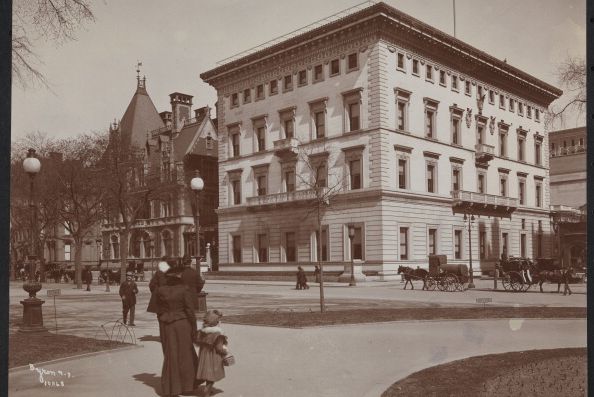 Museum of the City of New York//Getty Images
Museum of the City of New York//Getty Images
J.P. Morgan is also the one to thank for the Metropolitan Club, a private institution he formed in 1891 along with the likes of William K. Vanderbilt and James A. Roosevelt (an uncle of future president Teddy Roosevelt) as original members. Today, the McKim, Mead & White-designed edifice still serves its founding ethos, though now the club admits women.
The Sinclair House
 FPG//Getty Images
FPG//Getty Images
Still one of the most unique landmarks in New York City, the Sinclair House, named for one of its later owners (oil baron Harry Sinclair), was built in the late 1800s in the French Renaissance style by C.P.H. Gilbert. Its Gothic arches, gargoyle heads, and intricate details impressed both the man who commissioned the palatial urban chateau, industrialist Isaac Fletcher, and architecture critics. Since 1955, the property, which commands the corner of Fifth Avenue and 79th street, has been the home of the Ukrainian Institute of America.
The Villard Mansions
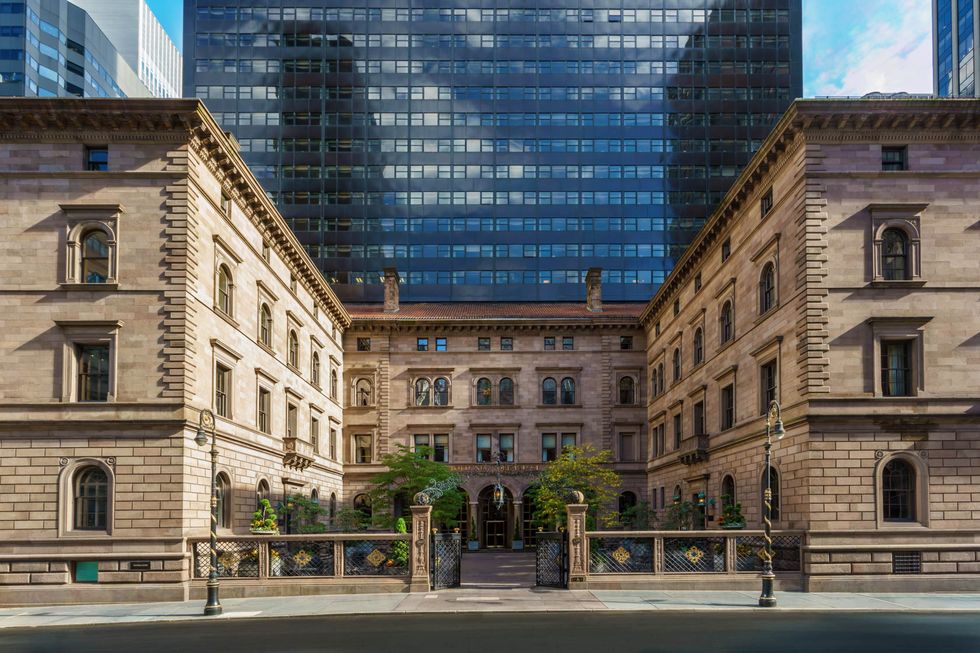 Dylan Cross/Dragonfly Image Partners
Dylan Cross/Dragonfly Image Partners
Shortly before he went bankrupt, railroad magnate Henry Villard commissioned not one but six Italian Renaissance style residences on Madison Avenue. Loosely inspired by his favorite palazzos in Rome, they were built around the one percenters’ design bragging right of the time: a courtyard. After his change in fortune, the homes went through a long list of owners before it turned into the centerpiece of the Palace Hotel (now the Lotte New York Palace) in the ’70s.
The Seventh Regiment Armory
 Ajay Suresh/Wikimedia Commons
Ajay Suresh/Wikimedia Commons
Gilded Age one percenters had a lot to protect and one of the ways to do so was to build armories for volunteer regiments. As high society migrated from the Lower East Side to Murray Hill to the Upper East Side, so too did the headquarters of the 7th New York Militia Regiment, which was known as the Silk Stocking Regiment because of its disproportionate number of members who were part of the Gilded Age elite. In 1880, it found its last permanent home on Park Avenue with a Gothic style building that featured, among other things, a library designed by Louis Comfort Tiffany and a Veterans Room with ornate hand carved wood paneling. Today it’s the Park Avenue Armory, a center now more for the rich to shop at art and design fairs than to plot defense strategies. [Source: Town and Country]
